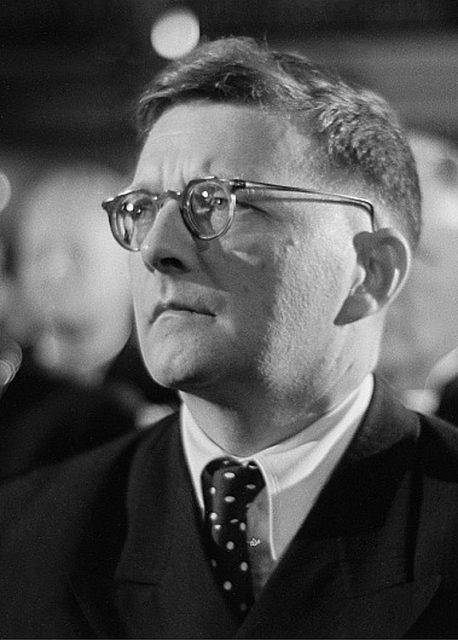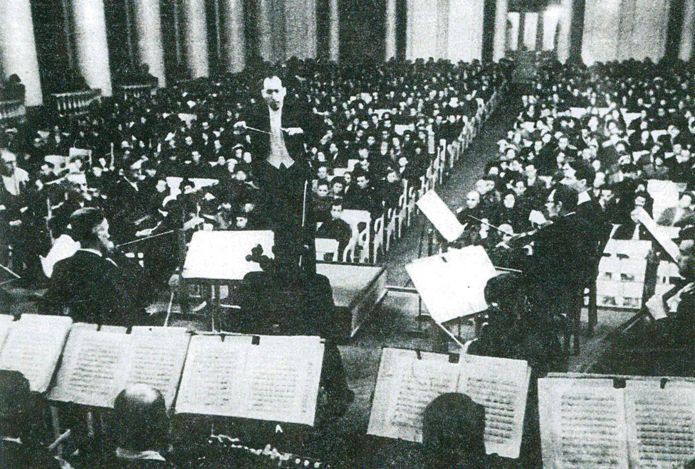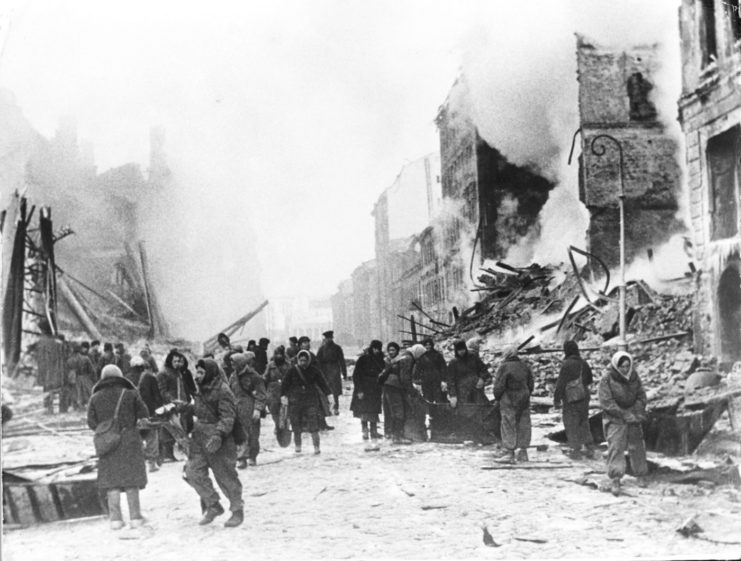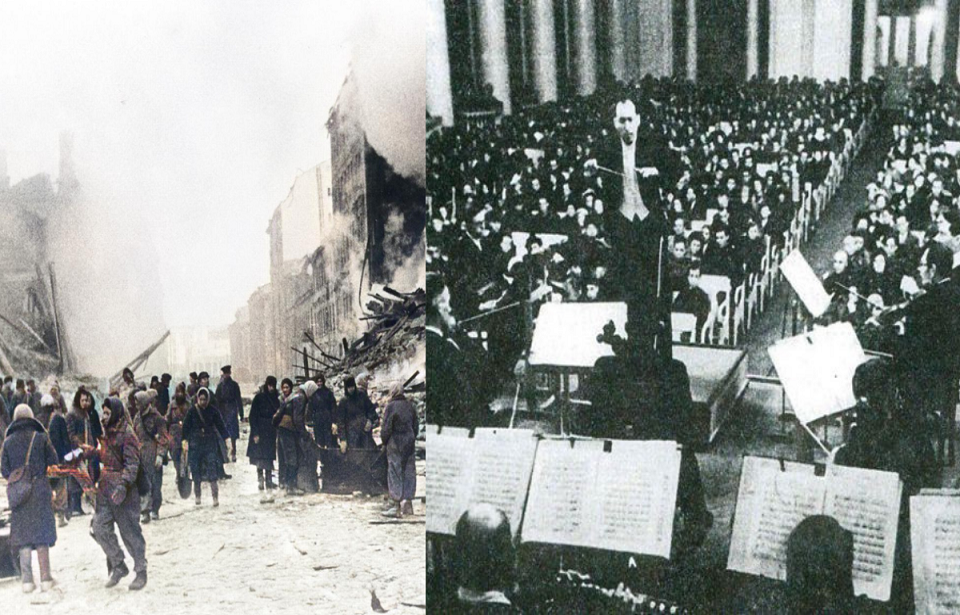During one of the Soviet Union’s worst points of WWII, the Siege of Leningrad, people were reduced to the lowest of lows to survive. The city had been under siege by the Germans for a year, and the citizens of the once-bustling city had resorted to eating cats, dogs, and even other humans to survive. Reports also emerged about people eating wallpaper and even grease.
However, despite the atrocious conditions, on one August night, the beautiful sound of a live orchestra echoed through the ghostly city.
The orchestra performed Shostakovich’s Seventh Symphony and sent a clear message to the Germans that the people of Leningrad were far from breaking.
Shostakovich’s Seventh Symphony

Dmitri Shostakovich completed the Seventh Symphony in December 1941 and planned to première the piece in Leningrad, but he and the Leningrad Philharmonic Orchestra evacuated the city shortly after the siege began. Instead, it premièred in Kuybyshev on 5 March 1942. Shostakovich dedicated the symphony to the people of Leningrad, but it would soon be performed there too.
Soviet conductor Karl Eliasberg was selected to conduct the symphony in the starving city. At this point, the city had been under siege for nearly a year, and its population had been annihilated. Most of this had been caused by starvation and the relentless German bombings. The siege is likely the worst in human history. The conditions Leningrad’s inhabitants were subject to were horrific.
Preparing a starving orchestra
No one in the city was in any state to perform music, but Eliasberg had his orders. He was part of the Leningrad Radio Orchestra, which was the only orchestra left in the city. Many of its members had been killed by the fighting or lost to starvation.
When he called his musicians to attend a rehearsal, only 15 actually made it. Almost all of the band members were starving and barely had the energy to move, let alone play an instrument. As a result the first rehearsal latest 15 minutes. The musicians simply didn’t have it in them.
The symphony required an orchestra of 100 players, so with a serious lack of members, the Soviet authorities sent out a message requesting any musicians to attend rehearsals. The orchestra was bolstered by citizens and soldiers, who came to rehearsals when they could.
During practice, it was not uncommon for the musicians to collapse or even die, as three did. Others sometimes rushed off to attend anti-aircraft duties.
As understandably unwell the musicians were, Eliasberg needed them to perform, so he introduced a strict system that punished members who were not up to standard or if they arrived late. The punishment was a reduction in rations.
With Eliasberg’s guidance and plenty of practice, the group started making progress. They managed to cut their rehearsals close to the limit, only completing a single full play-through of the Seventh Symphony three days before the day of the performance.
August 9 1942

The date of the performance was chosen because it was the day Hitler planned to celebrate the expected fall of the city. Before the first instruments sounded, the Soviets unleashed a powerful bombardment on German positions to ensure they were quiet throughout the duration of the performance. Loudspeakers were placed around the city in such a way that the German besiegers would hear the performance clearly.
The performance began, marking a strange juxtaposition between the peaceful beauty of music and the utter destruction all around.

One of the Leningrad inhabitants who witnessed the performance was 18-year-old Olga Kvade, who said “The chandeliers were sparkling, it was such a strange feeling. On the one hand, it couldn’t be possible – the blockade, burials, deaths, starvation, and the Philharmonic Hall – it was just so incredible.”
She added that “The only thing we feared was that the Germans would start bombing us. I was thinking, ‘God, let us listen to it to the end.’ But then Eliasberg came out, the orchestra stood up, and they played. Everyone was starving, but they were all dressed up in bow ties.
“On the one hand I wanted to cry but at the same time, there was a sense of pride. ‘Damn you, we have an orchestra! We’re at the Philharmonic Hall so you Germans stay where you are!’ We were surrounded by Germans. They were shelling us, but there was this feeling of superiority.”
When the symphony came to an end it was met with an hour-long ovation.
Also listening were the German troops just outside the city, who were hungry and scared too. The siege would not be lifted for another half, but the performance provided an enormous boost in morale to the people of the city and has never been forgotten.
